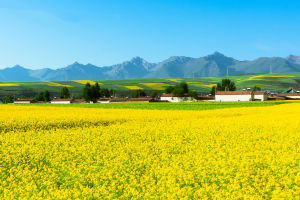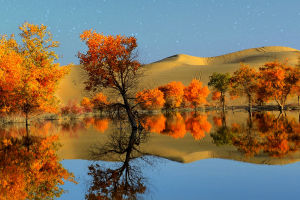The Namib Desert of Namibia in southwest Africa is a unique and breathtaking destination for tourists. Known for its red desert, located in "Southsley," which means "swamp at the end" in the local Afrika language.
The sand in the Southey Desert comes from the Orange River on the border between Namibia and South Africa. The Orange River is a major river in South Africa that flows from east to west into the Atlantic Ocean.
Due to the influence of the Benguela cold current, the sand in the Orange River moves north in the direction of ocean currents and winds, which forms the huge desert on the coastline of Namibia.
The sand is rich in iron, which over hundreds of millions of years has oxidized and turned red, creating the unique appearance of the red desert. The color of the desert also changes with the trajectory and light of the sun, making for a constantly evolving and mesmerizing landscape.
One of the highlights of the red desert is the sand dunes in Whale Bay, located hundreds of kilometers from Southey. The sand has just been blown ashore with iron by the sea breeze, creating a thin layer of black powder on top of the dunes.
Tourists can book a hot air balloon lift-off tour and enjoy a spectacular view of the whole red desert from high altitude. The red sand dunes set against the blue sky are truly breathtaking.
Driving into Namib Nockruff National Park, visitors will be surrounded by more and more red dunes, some of which are C-shaped curves and some are S-shaped curves. The beautiful curves extend into the hinterland of the desert.
The light and shadow of the sun shining obliquely on the sand dunes in the early morning or evening create an enchanting and simple shape, making it a popular spot for photography.
The No. 45 sand dune, known as the business card of the Red Desert, has appeared on the covers of National Geographic and major travel magazines and is a favorite spot for photographers to shoot blockbusters.
Further west is the Sossus salt marshes, which includes the death Valley, an eerie and barren area that has been without signs of life for nearly a thousand years. The surrounding sand dunes and scorching sun contribute to the desolate atmosphere.
The dry air and few clouds, coupled with the barren desert and little precipitation, make for a perfect spot to stargaze. Namibia is home to one of only five Night Starry Sky reserves in the world, making it a must-see destination for those who are fascinated by the night sky.
Overall, the Namib Desert of Namibia is a destination not to be missed. The red desert, sand dunes, and salt marshes offer a unique and captivating landscape that will leave visitors in awe. It's a perfect place for photographers, nature lovers, and stargazers alike.


